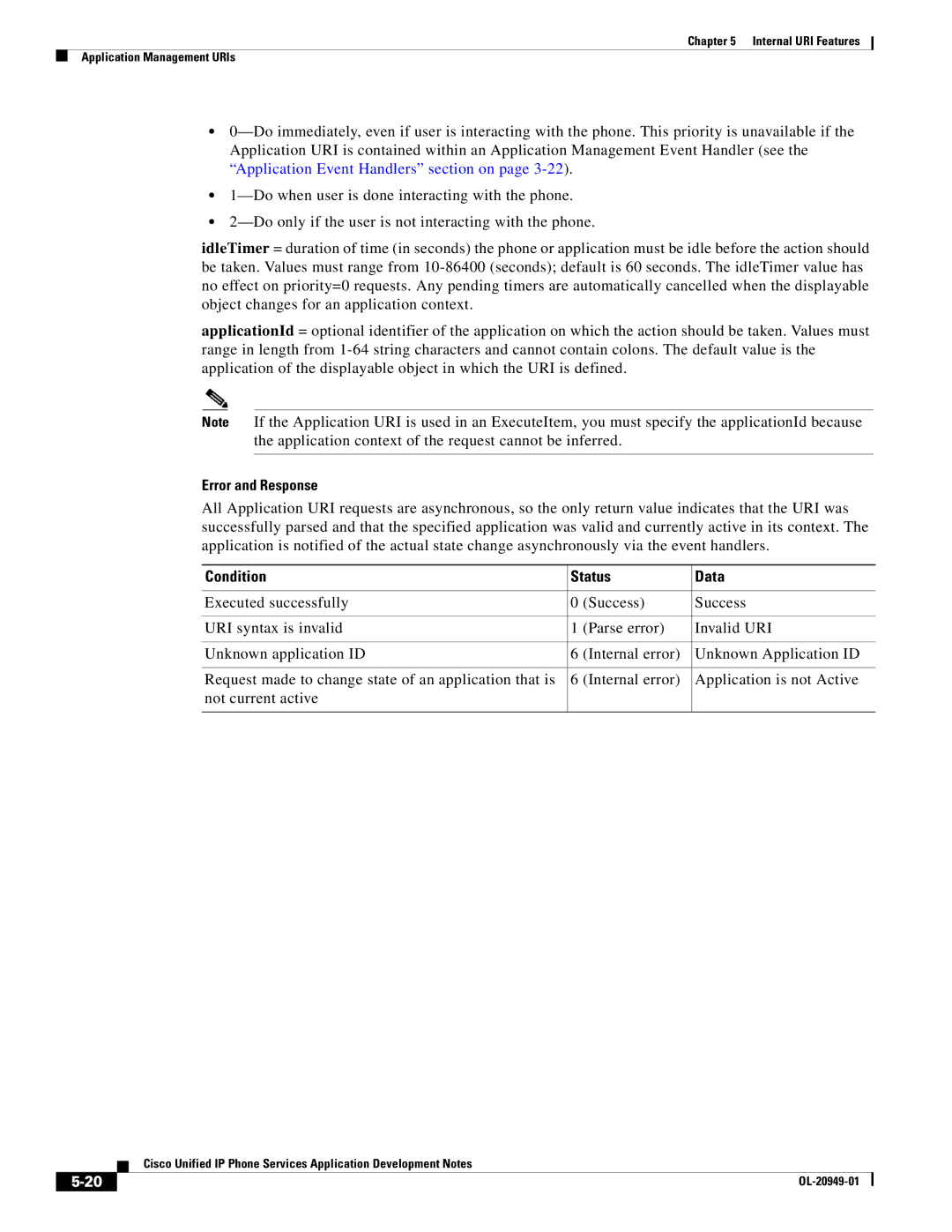
Chapter 5 Internal URI Features
Application Management URIs
•
•
•
idleTimer = duration of time (in seconds) the phone or application must be idle before the action should be taken. Values must range from
applicationId = optional identifier of the application on which the action should be taken. Values must range in length from
Note If the Application URI is used in an ExecuteItem, you must specify the applicationId because the application context of the request cannot be inferred.
Error and Response
All Application URI requests are asynchronous, so the only return value indicates that the URI was successfully parsed and that the specified application was valid and currently active in its context. The application is notified of the actual state change asynchronously via the event handlers.
Condition | Status | Data | |
|
|
|
|
Executed successfully | 0 | (Success) | Success |
|
|
|
|
URI syntax is invalid | 1 | (Parse error) | Invalid URI |
|
|
|
|
Unknown application ID | 6 | (Internal error) | Unknown Application ID |
|
|
|
|
Request made to change state of an application that is | 6 | (Internal error) | Application is not Active |
not current active |
|
|
|
|
|
|
|
| Cisco Unified IP Phone Services Application Development Notes |
